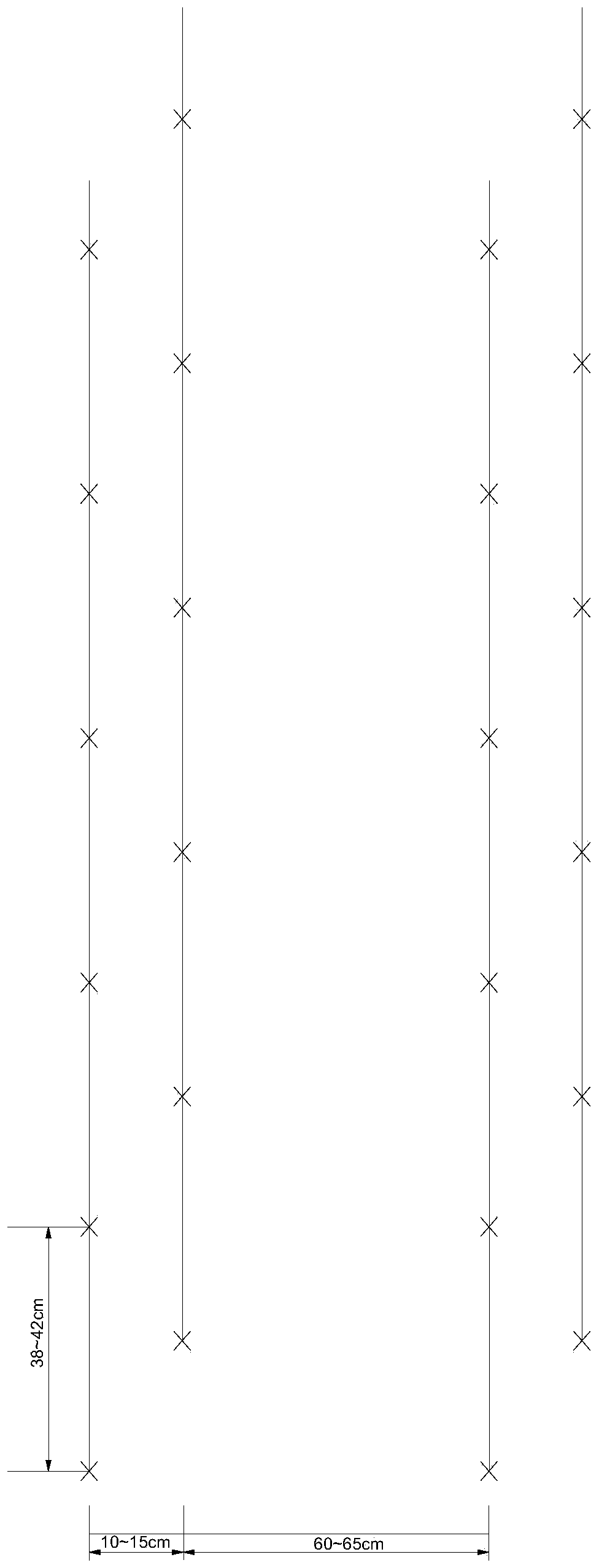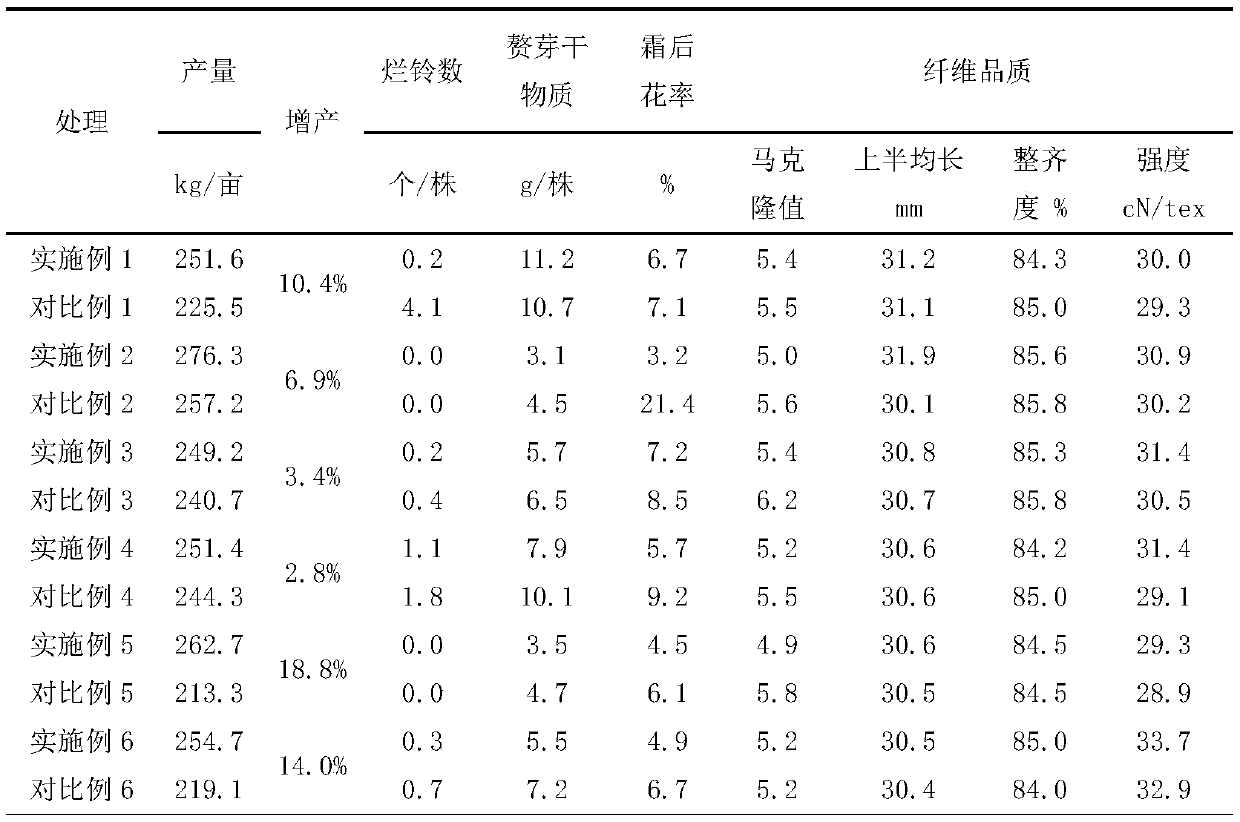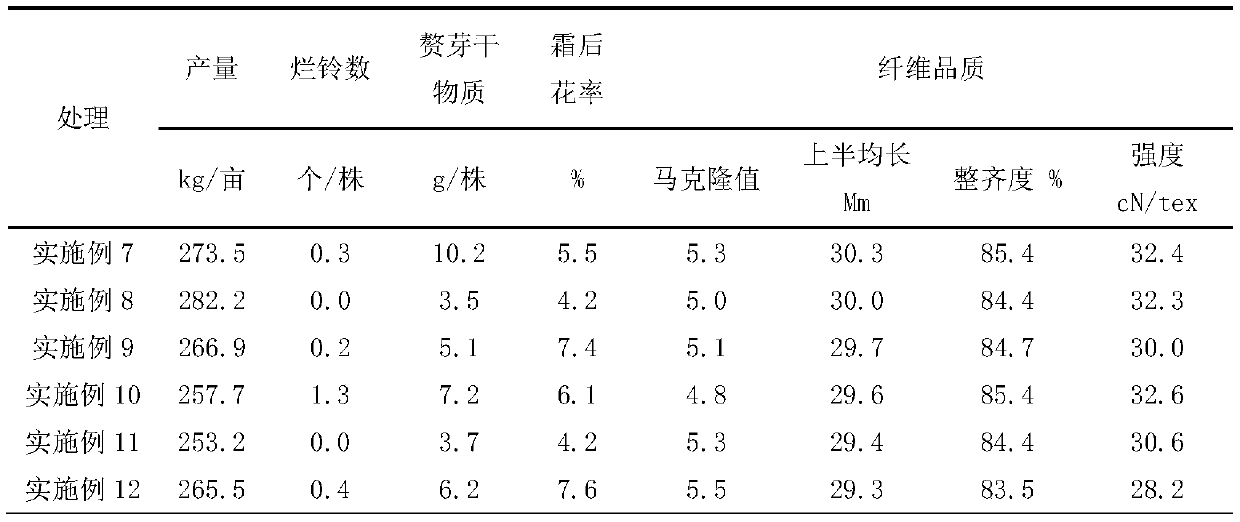Cotton cultivation method suitable for climate type of coastal saline-alkaline dry farming region
A cultivation method and cotton technology, applied in the agricultural field, can solve problems such as excessive waste, increased fertilization times, unfavorable one-time harvesting, etc., and achieve the effect of reducing rotten bolls and improving fiber quality
- Summary
- Abstract
- Description
- Claims
- Application Information
AI Technical Summary
Problems solved by technology
Method used
Image
Examples
Embodiment 1
[0033] The cotton cultivation method suitable for the coastal saline-alkali dryland climate type provided by the present embodiment includes:
[0034]Before sowing, base fertilizer is applied in cotton fields with low fertility, and the base fertilizer is an ecological organic fertilizer with an application rate of 75 kg per mu.
[0035] Sowing on May 1st, the sowing density is about 6000 plants / mu, the maximum row spacing is 63cm, the small row spacing is 13cm, and the hole spacing is 40cm. During the period from June 15th to July 20th, topdress the foliar fertilizer, spray 200 times of ecological organic foliar fertilizer every 7 days, and spray it through. Topping off July 5th.
[0036] Spray Aifudi twice in the late cotton growth period, the first spraying is carried out when the cotton plant grows to about 80cm, that is, the range of 75-85cm, and the second spraying is carried out in early August, and the concentration of the first spraying is It is 2ml / kg, and the seco...
Embodiment 2
[0038] The cotton cultivation method suitable for the coastal saline-alkali dryland climate type provided by the present embodiment includes:
[0039] Apply base fertilizer in cotton fields with low fertility before sowing, the base fertilizer is ecological organic fertilizer and the rate of application is 100kg per mu.
[0040] Sowing on May 5, the sowing density is about 5500 plants / mu, the maximum row spacing is 65cm, the small row spacing is 15cm, and the hole spacing is 42cm. During the period from June 15th to July 20th, topdress the foliar fertilizer, spray 200 times of ecological organic foliar fertilizer every 7 days, and spray it through. Topping on July 10th.
[0041] Spray Aifudi twice in the late cotton growth period, the first spraying is carried out when the cotton plant grows to about 80cm, that is, the range of 75-85cm, and the second spraying is carried out in early August, and the concentration of the first spraying is It is 2.5ml / kg, and the second spray ...
Embodiment 3
[0043] The cotton cultivation method suitable for the coastal saline-alkali dryland climate type provided by the present embodiment includes:
[0044] Apply base fertilizer in cotton fields with low fertility before sowing, and the base fertilizer is an ecological organic fertilizer with an application rate of 85 kg per mu.
[0045] Sowing on May 3, the sowing density is about 6500 plants / mu, the maximum row spacing is 60cm, the small row spacing is 10cm, and the hole spacing is 38cm. During the period from June 15th to July 20th, topdress the foliar fertilizer, spray 200 times of ecological organic foliar fertilizer every 7 days, and spray it through. Topping on July 8.
[0046] Spray Aifudi twice in the late cotton growth period, the first spraying is carried out when the cotton plant grows to about 80cm, that is, the range of 75-85cm, and the second spraying is carried out in early August, and the concentration of the first spraying is It is 2.2ml / kg, and the second spray...
PUM
 Login to View More
Login to View More Abstract
Description
Claims
Application Information
 Login to View More
Login to View More - R&D
- Intellectual Property
- Life Sciences
- Materials
- Tech Scout
- Unparalleled Data Quality
- Higher Quality Content
- 60% Fewer Hallucinations
Browse by: Latest US Patents, China's latest patents, Technical Efficacy Thesaurus, Application Domain, Technology Topic, Popular Technical Reports.
© 2025 PatSnap. All rights reserved.Legal|Privacy policy|Modern Slavery Act Transparency Statement|Sitemap|About US| Contact US: help@patsnap.com



